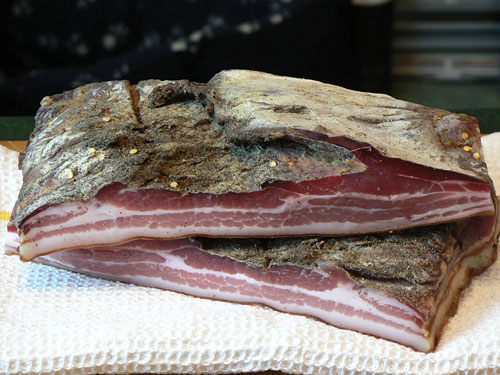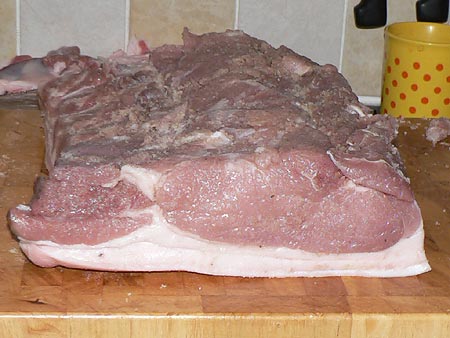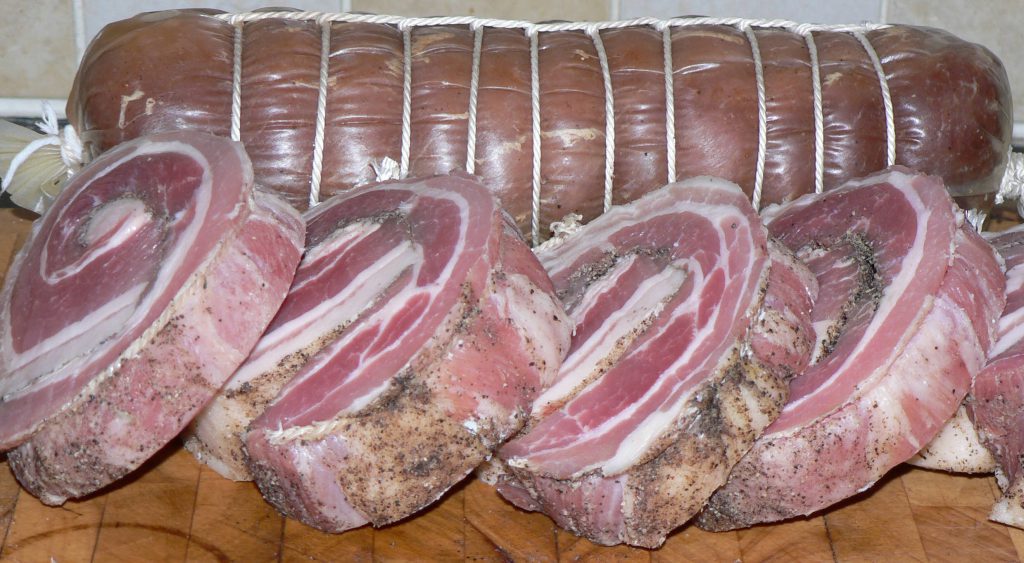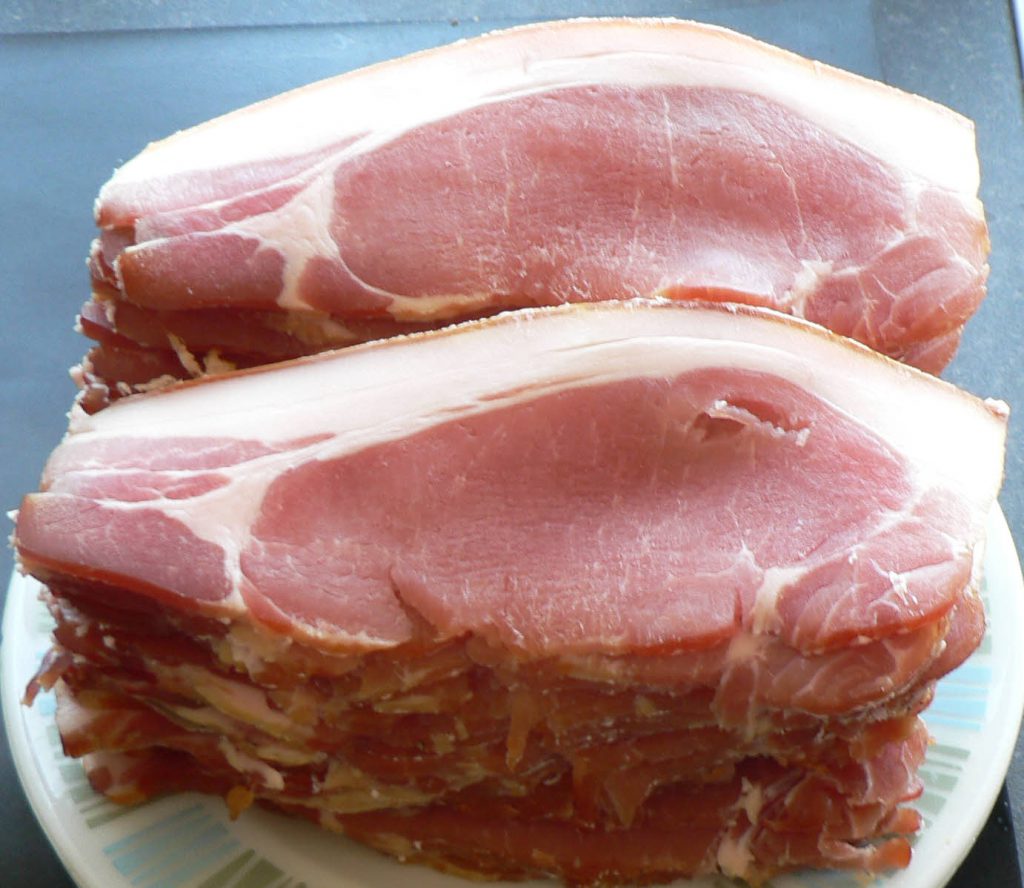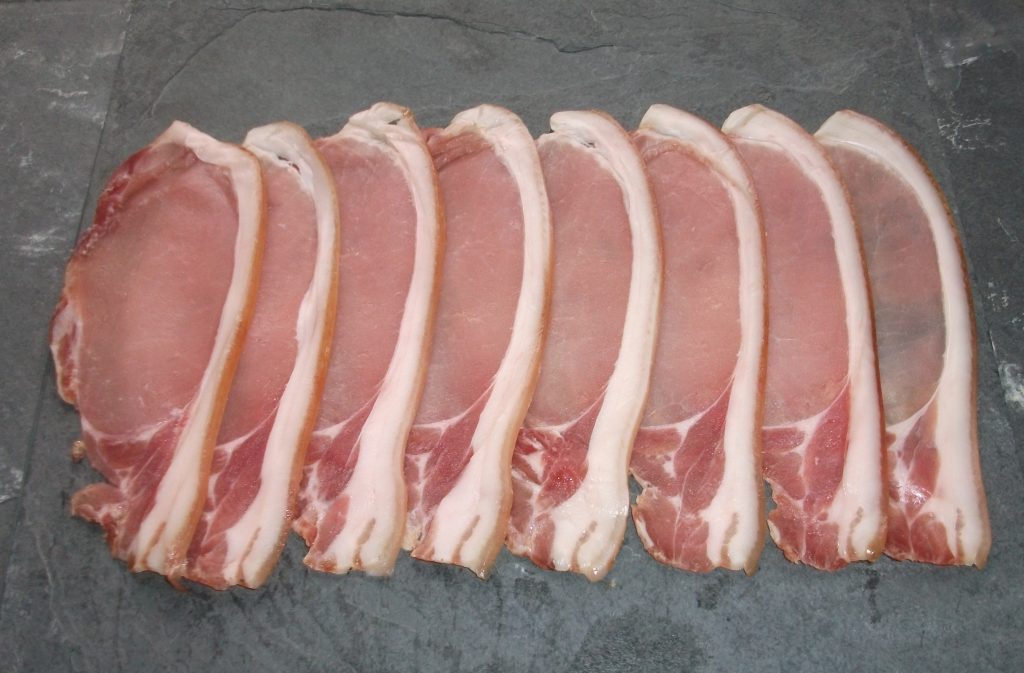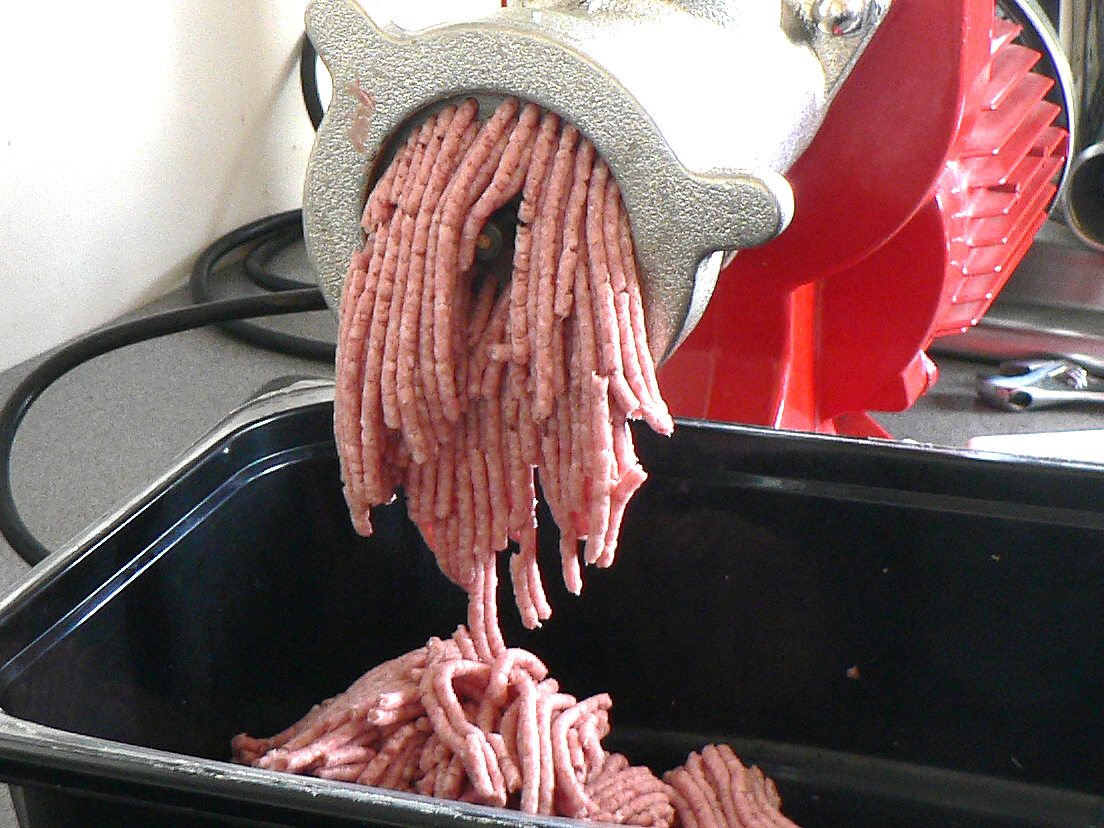This is an adaption of the tutorial that I wrote on ‘beginners’ bacon curing for the sausagemaking.org forum.
Let’s Make Bacon!
Cure suppliers
Details of cures and suppliers can be found on this page.
Cleaning/Hygiene
Pay attention to hygiene; keep everything clean and safe. Ensure work surfaces and cutting boards are clean. You may wish to use plastic gloves when handling curing salts.
Choice, Size and Source of Meat
Your meat can be from the supermarket, local butcher, or direct from the farm-shop or farm. You can cure as much or as little as you want. Remember though, the better the meat: the better the bacon. For this reason, many people choose rare-breed or free-range meat. However, for your first project, a joint from the supermarket is fine. If something goes wrong it won’t have cost you the earth!
You’ll need:
For Streaky Bacon – a boned joint of belly pork
For Back Bacon – a boned joint of loin of pork
In the supermarket, both of these are likely to be rolled and tied with string. Remove any string and unroll the meat. It should be noted that the rashers from these joints are smaller than those of commercial bacon as smaller pigs are used.
The Dry Cure
For this guide, we will pretend we are dry curing a piece of meat weighing 1930gm (1.93kg/4.24lb).
For each 1kg of meat we need:
22gm Salt
8gm Sugar
2.4gm Cure #1
0.4gm Sodium ascorbate (optional)
The sugar can be one of your choosing white, brown, Demerara or even honey or maple syrup. The darker the sugar: the stronger the flavour. A mixture of white and Demerara, or light brown sugar, makes tasty mild bacon.
Weigh your piece of meat and calculate the amount of cure you need…
If you have accurate scales:
For our 1930gm (1.93kg) example, that’s:
Salt 22gm x 1.93kg = 42.5gm
Sugar 8gm x 1.93kg = 15.4gm
Cure #1 – 2.4gm x 1.93kg = 4.6gm
Sodium ascorbate 0.4gm x 1.93kg = 0.77gm
You can add any herbs and spices you fancy. A sprinkle of black pepper and thyme keeps things simple.
If you don’t have accurate scales:
Make up a batch of cure:
Salt 220gm
Sugar 80gm
Cure #1 – 24gm
Sodium ascorbate 4gm (optional)
Now, ensuring it’s well mixed (you could grind it in a clean coffee grinder, if you have one, to make sure) use 33gm per kg meat. So in this case that would be 33gm x 1.93kg = 63.69gm (64gm to make it easier to weigh).
You can add any herbs and spices you fancy. A sprinkle of black pepper and thyme keeps things simple.
For easy calculation for all weights of meat use one of my online calculators:
For My Favourite Bacon – the moderately salted bacon that’s featured above.
Or, alternatively, this very Mild Bacon
Or, make up your own cure – this calculator will help you to do it safely: Bacon Cure Calculator
These and others can also be accessed via my Cured Meat Calculators page
Applying the Cure Mix to the Meat
The amount of cure mix may seem a lot less than you expected. Don’t add more, that’s how it’s meant to be.
Sprinkle about 80% – 90% of the cure mix onto the flesh side of the meat and rub well in, getting into all the folds and crevices. Don’t forget the ends. The remainder is sprinkled onto the skin/fat side and rubbed in well.
Now put the meat, along with any cure that fell off whilst you were rubbing it in, into a food grade bag, or wrap it well in cling film. In fact it’s easier to put the meat into the bag and then rub the cure into it! Put it into the fridge; on a tray’s best, just in case it leaks. Every day or two turn it over and give it a bit of a rub; you can do this ‘through’ the bag without opening it. Don’t worry if liquid comes out of the meat. It often, but not always, does. Just leave it all in the bag.
How Long Do I Leave It For?
The standard advice is to cure the meat for 1 day for each ½ inch (13mm) of thickness, plus two days. So for a piece of supermarket belly like ours, about 1½ (39mm) inches deep, thats going to be 3 days + 2 days = 5 days total.
Don’t lose sleep about the curing times. Unlike older curing methods, this type of cure is not time-critical, it won’t be too salty if you leave it longer than the calculated time so it’s always best to err on the side of caution. If in doubt leave it a little longer.
You may notice, because you’re bound to take a peek, that it doesn’t appear to have changed colour. That’s normal. The outside colour is deceiving. If you’ve followed the instructions it’ll be lovely red bacon when you cut into it.
Wash and Dry
At the end of the curing time, rinse the bacon in cold water, then dry it with a clean cloth or paper towel. It then needs to dry out a bit before use. It’s best hung in the fridge, but this can sometimes be difficult. If you can’t hang it, put it where the air can get around it; maybe on the fridge shelf with something underneath to catch any drips. Leave it for at least a couple of days to dry; I tend to leave it longer as I prefer it well dried. When your impatience gets the better of you, slice it, cook it, and enjoy!
Storing Your Bacon
This is not ‘old-style traditional bacon’ that can be hung in the rafters all winter. Keep it in the fridge for up to a few weeks, or for longer storage freeze it whole, or in slices, for 1 to 2 months. If you Vac-Pac it, you can keep it longer but it must be kept under 5°C or frozen.
